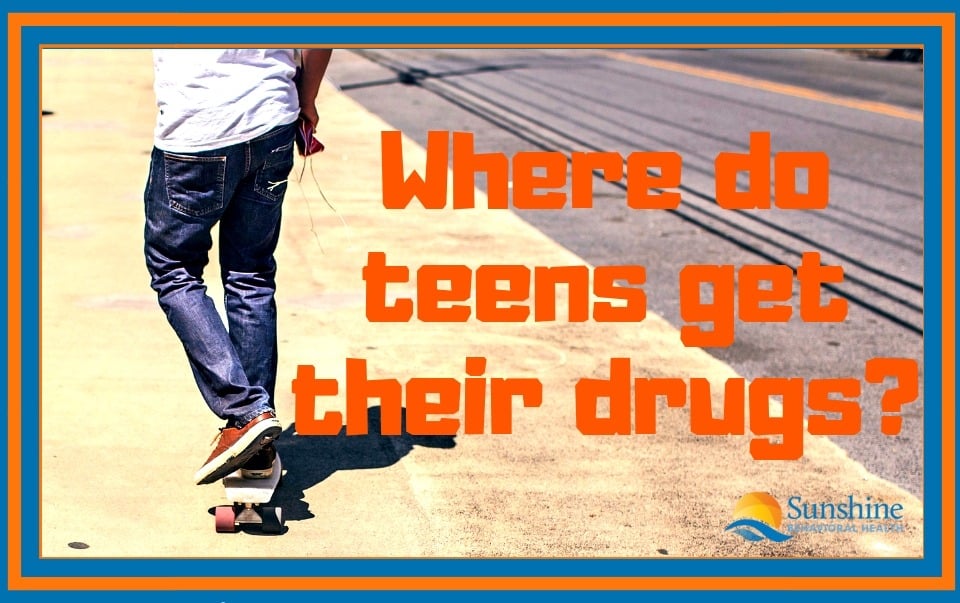
Every year, the National Institute on Drug Abuse conducts a survey on teen drug use. In their annual Monitoring the Future study for 2018, the NIDA found that a relatively high number of teens are using drugs. In fact, 32% of 10th graders and 37% of 12th graders are vaping, with nearly 15% vaping with marijuana or hash oil, marking a sharp increase in teen nicotine use over previous years. Nearly 6% of 12th graders are using marijuana daily and 36% have used it over the past year. Additionally, 13% of high school seniors are engaging in binge drinking, 5% are misusing sedatives, nearly 5% are abusing ADHD stimulant medications, and 3.4% are abusing opioids. Finally, a small percentage of high school seniors are using illicit drugs, such as LSD, cocaine, Ecstacy, Molly, or heroin.
If you are like many parents, you’ve talked with your children and teens about drugs and alcohol. You likely have house rules about your children not using drugs, smoking, or drinking alcohol. You might even have your liquor stored safely in a locked cabinet. While you might assume you have been vigilant about having a drug-free home, one day you might come to the heart-breaking realization that your teen is using drugs or alcohol, despite all of the precautions you’ve taken, leaving you to wonder how do teens get their drugs?
At Home
For many teens, substance use starts at home. Experimentation with drugs often starts with prescription pills from the family’s medicine cabinet. ADHD medications, such as Ritalin or Concerta, anxiety drugs like Xanax, sleeping pills, or opioid pain medications are often used to achieve a high. Some teens may start using these medications with a doctor’s prescription and begin abusing them after they have developed a tolerance or dependence on these medications, while other teens may steal them from other members of the family. Many teens who use alcohol, cigarettes, or vape pens also obtain these from home.
At School
Unfortunately, even if you are responsible and lock up drugs and alcohol in your home, your teen may still obtain these substances at school. Many teens know where to go on campus for ADHD medications, pain pills, or . “Study drug” abuse is a common trend in many high school and college campuses. Students might even pool their money to buy marijuana and hard drugs from another teen on campus who has access to illicit drugs.
From the Store
It is important to remember that not all substance abuse happens with illegally-obtained drugs. In fact, teens often seek out highs from items that are cheap, easy, and legal to obtain. Nearly 10% of high school students report getting high on cough or cold medication, which can easily be purchased over the counter or online.
Additionally, 20% of American children will experiment with huffing before beginning high school, and over 1.1 million teens use inhalants each year. Nearly all substances used for huffing, including aerosol sprays, cleaning fluids, Whippets, glue, paint thinner, and nail polish remover are legal to purchase and are easy to find in many households.
Other examples of substances teens can purchase or legally obtain that have been abused include diet pills, allergy medications, diuretics, herbs, laxatives, and even morning glory seeds.
Of course, there are still students who will also use a fake ID to purchase alcohol, cigarettes, or vaping supplies. One recent study found that nearly two-thirds of college students have used a fake ID at least once to purchase alcohol.
The Dangers of Online Drug Trading
There is no doubt that teens today have near-unlimited access to the Internet. Unfortunately, with that comes access to drugs in a way that is often undetectable to even the most observant families. Teens no longer have to risk arrest when buying drugs from a shady dealer on a street corner. Today’s teens have access to dealers with a simple click via social media and the online drug trade.
Online Pharmacies
While some teens buy, sell, and trade drugs through secret social media groups, others obtain pills from fake pharmacies that offer painkillers, sedatives, anti-anxiety medications, and other addictive substances. These online pharmacies delivery medications through the mail without a prescription. Most of these online pharmacies are not based in the United States and do not have precautions in place to prevent teens from purchasing drugs.
The Dark Web
Finally, some tech-savvy teens obtain drugs through the dark web, which involves a hidden network of websites only accessible through special browsers. Drugs can be purchased, many times using crypto-currencies, from markets from around the world. This is an especially dangerous practice as the quality and type of drugs obtained in this manner are not monitored, making dying from overdoses or poisonings much more likely.
As a parent, knowing that your teen still has access to drugs despite your best efforts can be concerning. However, the best thing you can do is to keep talking with kids about the dangers of drugs. In addition, educate yourself on the slang terms for drugs and be aware of your teen’s internet use and where they are spending their money. If you suspect that your teen is struggling with substance abuse, call us today. We can help your teen get on the road to recovery from alcohol or drug abuse.
A Message From Our CEO
Medical disclaimer:
Sunshine Behavioral Health strives to help people who are facing substance abuse, addiction, mental health disorders, or a combination of these conditions. It does this by providing compassionate care and evidence-based content that addresses health, treatment, and recovery.
Licensed medical professionals review material we publish on our site. The material is not a substitute for qualified medical diagnoses, treatment, or advice. It should not be used to replace the suggestions of your personal physician or other health care professionals.





